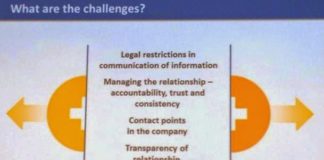It’s official — well, all except for the rubber stamp from HHS and Congressional approval — the drug industry has agreed to pay the FDA “$40,000 to $50,000 at the beginning of each year for each television ad campaign they planned to air that year,” according to a Wall Street Journal report (“FDA Sets Deal With Drug Firms On TV-Ad Vetting Companies to Pay More Fees“).
As I reported previously (see “Pay-(FDA)-Per-(Pre)View of DTC“), there’s more here than meets the eye. For example, AstraZeneca proposed that any pre-approved ad should be exempt from a subsequent finding by the FDA that the advertisement is misleading or inaccurate. I don’t know if this is part of the announced agreement or not — the WSJ article was silent on that issue.
This agreement is part of a larger deal to increase “user fees” by about one-third (from $300 million currently) under PDUFA (Prescription Drug User fee Act), which expires soon and must be reauthorized by Congress next year. Unfortunately for the drug industry, that Congress will be a Democratic Congress and as the WSJ article points out “the proposed agreements are likely to be a first step in what will be a far broader debate over whether, and how, to reform the FDA.”
Conflict of Interest Conundrum – “No Comment”
Other pundits — such as Mark Senak over at EyeOnFDA — have pointed out that user fees pose an “interesting conundrum” for the FDA:
“How does the agency demonstrate that, by collecting more funds from industry, it is better positioned to protect public health? It is an interesting question and one which, if the agency is going to seek these funds, the agency had better well address as they ask for them…to proceed to ask for funds without addressing the question of conflict of interest naturally opens the way for an opportunity for critics, even without a preponderance of evidence on their side, to prevail. The agency does not appear particularly thoughtful in organizing their messaging, but they should get their ducks in a row on this one.”
And how is the FDA addressing this issue and getting its “ducks in a row?” As reported in the WSJ: “Spokesmen for PhRMA and BIO declined to comment. An FDA spokeswoman also declined to comment.”
Take the Pharma Marketing News Online Survey
Pharma Marketing News is currently hosting an online survey to determine how likely these changes are according to pharmaceutical marketing experts. You can take the survey here. You will be able to see a de-identified summary of the current results after you complete the survey. I plan to also write up a summary of the results for the December issue of the newsletter. Your responses are held strictly confidential unless you give me permission to use your name.









![6 Digital Tools at the Center of Healthcare Digitalization [INFOGRAPHIC]](http://ec2-54-175-84-28.compute-1.amazonaws.com/pharma-mkting.com/wp-content/uploads/2021/04/6DigitalTools_600px-100x70.jpg)




